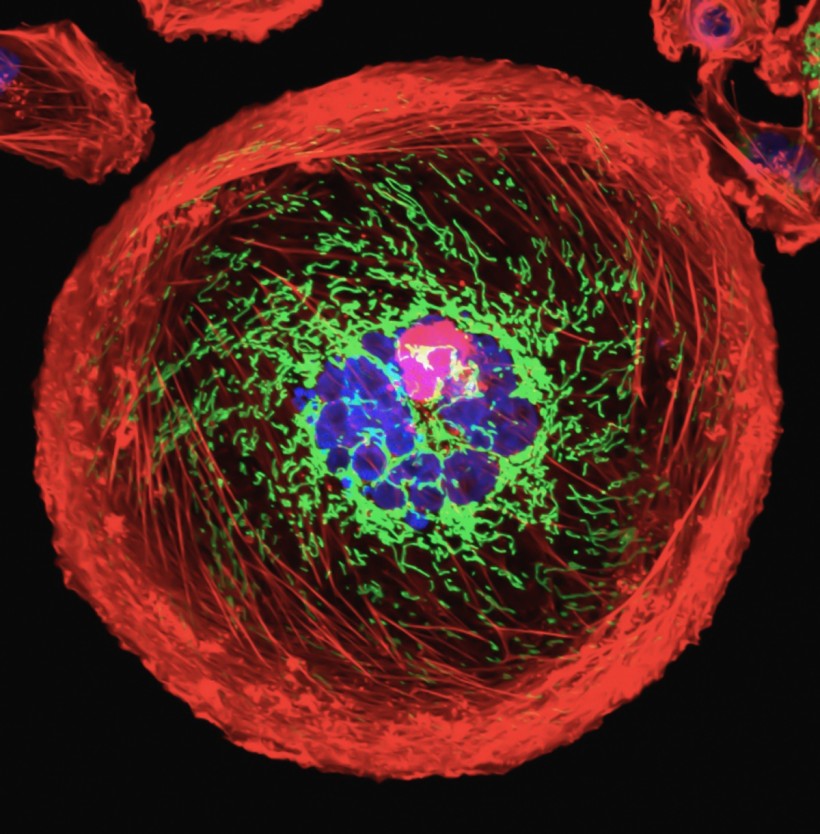Cytotoxic T cells, also known as killer T cells, are immune cells that kill foreign cells, cancer cells, and cells infected with a virus. They are armed with lytic granules that contain perforin proteins that punch holes in target cells and granzymes that gain access to cancer cells via the host and kill them.
A new study from the research team at the University of New South Wales (UNSW) Sydney's EMBL Australia Node in Single Molecule Science in the School of Biomedical Sciences reveals the mechanical forces that T cells use to kill cancer cells more efficiently.
Killer T Cells Prefer Outwardly Curved Cell Membranes
T cells are a subtype of white cells that are important in the immune system, especially in fighting cancer. They snuggle up into the target cells and form a junction called a cytotoxic immunological synapse between the two.
In the study titled "T Cell Cytoskeletal Forces Shape Synapse Topography for Targeted Lysis via Membrane Curvature Bias of Perforin," published in Developmental Cell, the research team identified mechanical forces generated by T cells influence how well perforin can punch through tumor cell membranes.
The team detected physical forces within T cells that trigger the lytic granules to move toward the immunological synapse where payloads are released, Phys.org reported. These forces also allow T cells to grab onto parts of the cancer cell membrane being pulled and manipulated.
Research co-lead Dr. Daryan Kempe at UNSW Medicine & Health added that aside from the mechanical tension and biochemical configuration, the shape of the target diseased cell membrane is also important when killer T cells choose their target.
Researchers demonstrated using human melanoma cell lines that perforin prefers outwardly curved tumor cell membranes to inwardly curved cells. The team believes that this bias help in ensuring that the payload is delivered into the cell and protects T cells from their assault.
Associate Professor Maté Biro at UNSW Medicine & Health, also the senior author of the study, said that the contents at the region of the membrane that is highly curved would be emptied as the granules arrive. Learning that there is a bias between positively and negatively curved membranes is completely unexpected.

Breast cancer: polyploid giant cancer cell (PGCC)
ALSO READ: Cancer Cells Restructure Injured Cell Membranes to Survive; Damaged Parts Are Eaten Afterwards
What the Mechanical Forces in Cells Tell Us
In a similar report from Science Daily, Miro said that T cells are isolated from healthy blood donors and mice in most experiments that relied on the biophysical assays with cancer cells. They try to control the pressure independently using high-precision microfluidic pumps, micropipettes, and computerized micromanipulators.
He explains that one micropipette would pick up the T cell and another would pick up the tumor cell and then bring them into contact under the microscope where they could capture an image of the cytotoxic process. More so, the method allows them to measure the mechanical properties of the cells as they engage in the process since they can control the exact pressure inside each micropipette.
In conclusion, researchers said that their findings add to the understanding of the mechanisms involved in how killer T cells destroy cancer cells. Knowing the mechanical forces behind this mechanism could help future researchers investigate how perforin work at the molecular level.
RELATED ARTICLE: Magnetic Nanoparticles Can Be Triggered to Release Therapeutic microRNA to Targeted Cancer Cells for Treatment
Check out more news and information on Cancer in Science Times.














